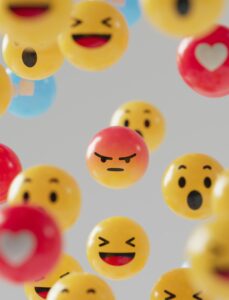As February comes to a close, many people anxiously await the coming of spring. For at least 29% of U.S. adults, the change of season brings a needed refresher after months of the blues. Seasonal affective disorder, or SAD, is a condition that leaves people feeling blue or down during the winter months of the year when the days are shorter and skies are cloudier. According to a CivicScience survey of 3,000 individuals, more than one-quarter report experiencing SAD to some extent. Eight percent of those surveyed had received a legitimate diagnosis of the condition while 21% reported the condition without a medical professional’s diagnosis. Official diagnosis or not, 29% of the gen pop feeling down and out during winter is significant.
Feeling blue after a streak of gray days is a normal human response to a lack of sunlight, but SAD goes a bit farther. According to the National Institute of Mental Health (NIMH), seasonal affective disorder is a subset of depression and can range from manageable to severe. But, 20% of survey respondents said they have been told by someone else that seasonal affective disorder was not a legitimate condition. Furthermore, people who experience SAD are significantly more likely than those who don’t to have been told that the disorder isn’t real. In fact, more than half of those who have experience with an official diagnosis have been told this.
For people who have SAD, 32% say they don’t do anything to treat their symptoms, but among those who do seek treatment, exercise is the most common form. Other common ways of handling SAD are vitamin supplements, light therapy, counseling, and medication, but those are used less frequently, with therapy being the least popular.
U.S. adults 34 and younger experience the most seasonal affective disorder compared to other age groups. Gen Z specifically reports the highest percentage of people who are self-diagnosed, but they also have the highest percentage of those who received a medical diagnosis, just by a smaller margin.
Women more than men also report more experiences with seasonal affective disorder overall, and report more instances of being told that the condition isn’t real.
Civicscience also discovered a correlation between trips to the doctor and experiences with SAD. The more doctor visits someone had in the last year, the more likely they were to have both medical diagnoses and self-diagnoses for SAD.
Lastly, people who struggle with seasonal affective disorder seem to be more prone to concern over public spaces during the pandemic. A logical conclusion could be drawn that the winter months of the pandemic were extremely challenging for people with SAD, a symptom of which can be social withdrawal and isolation.








